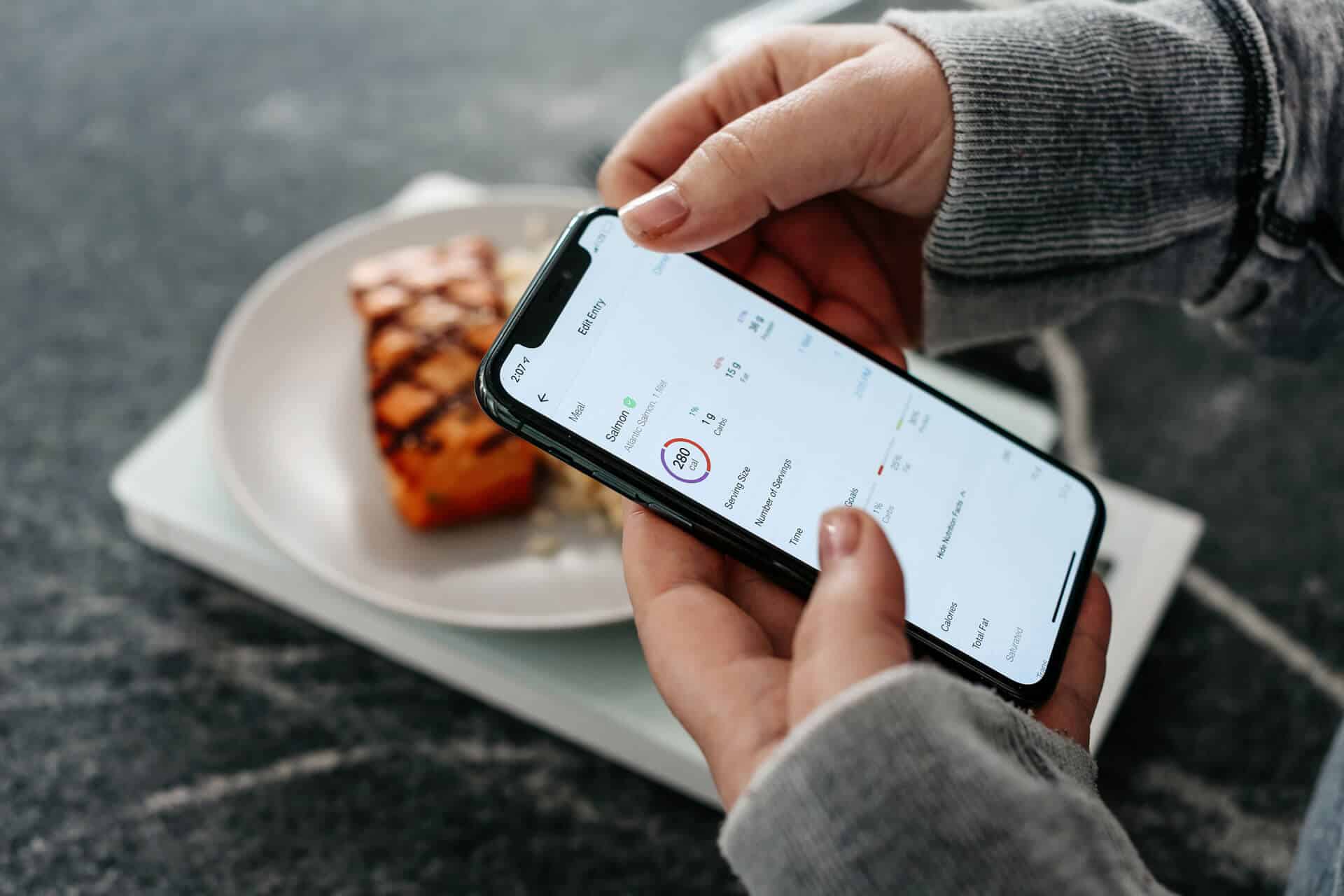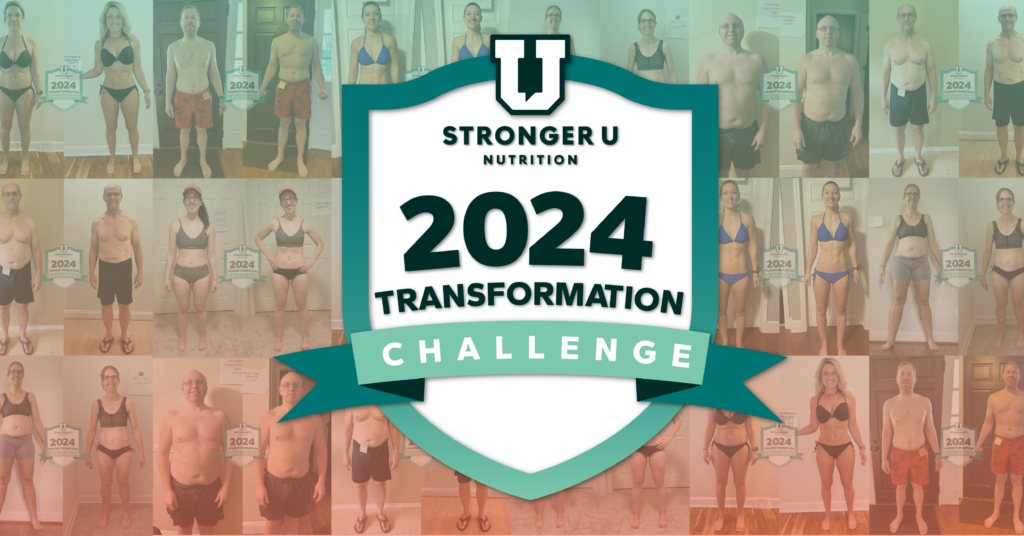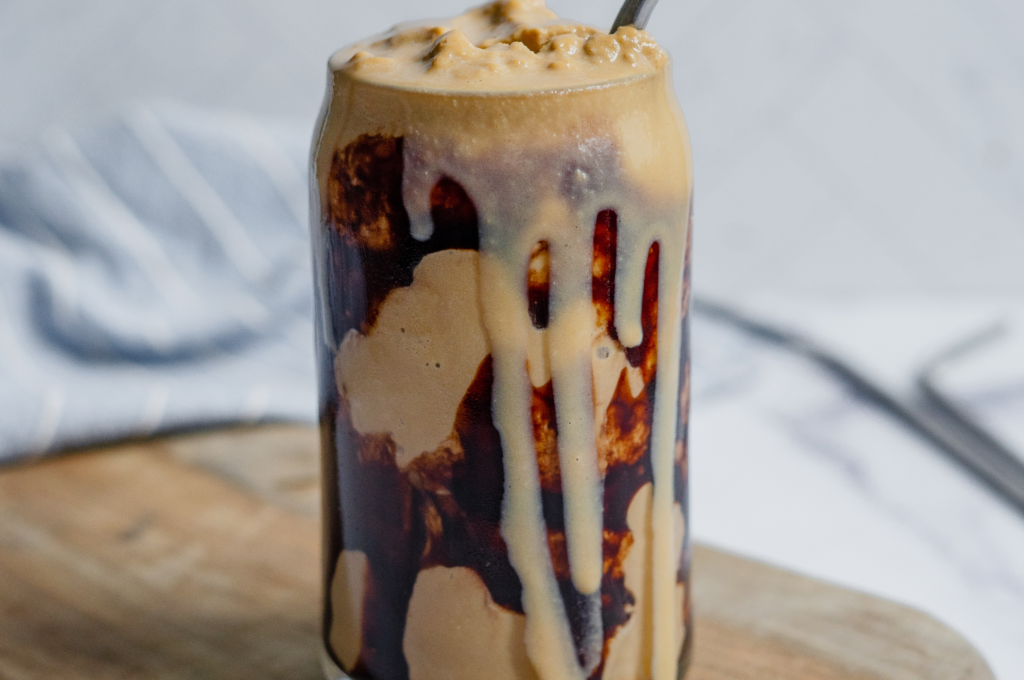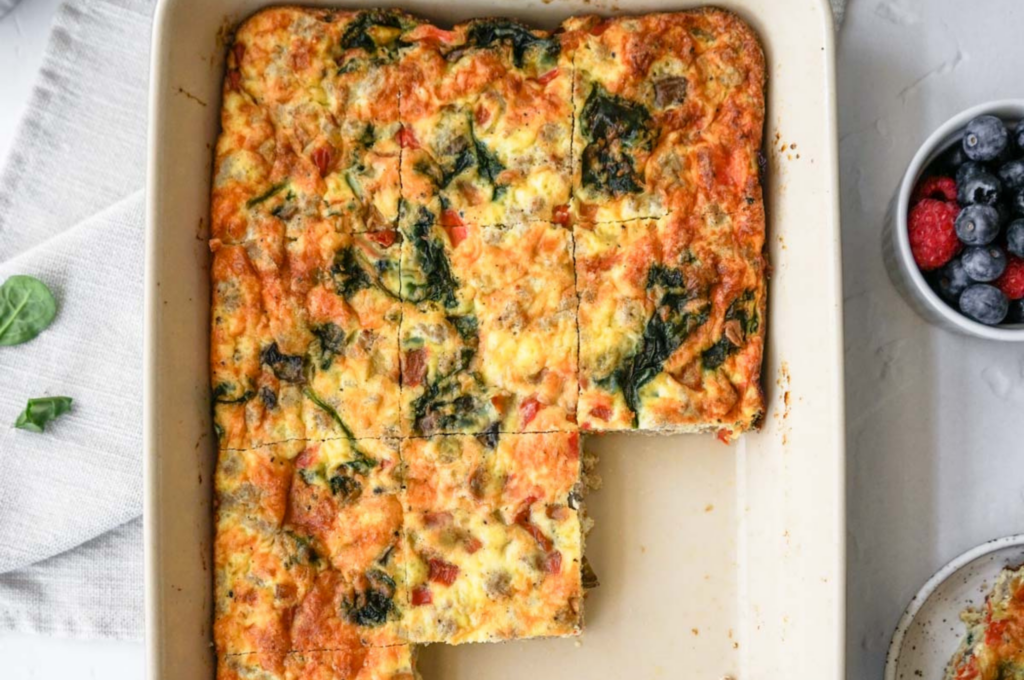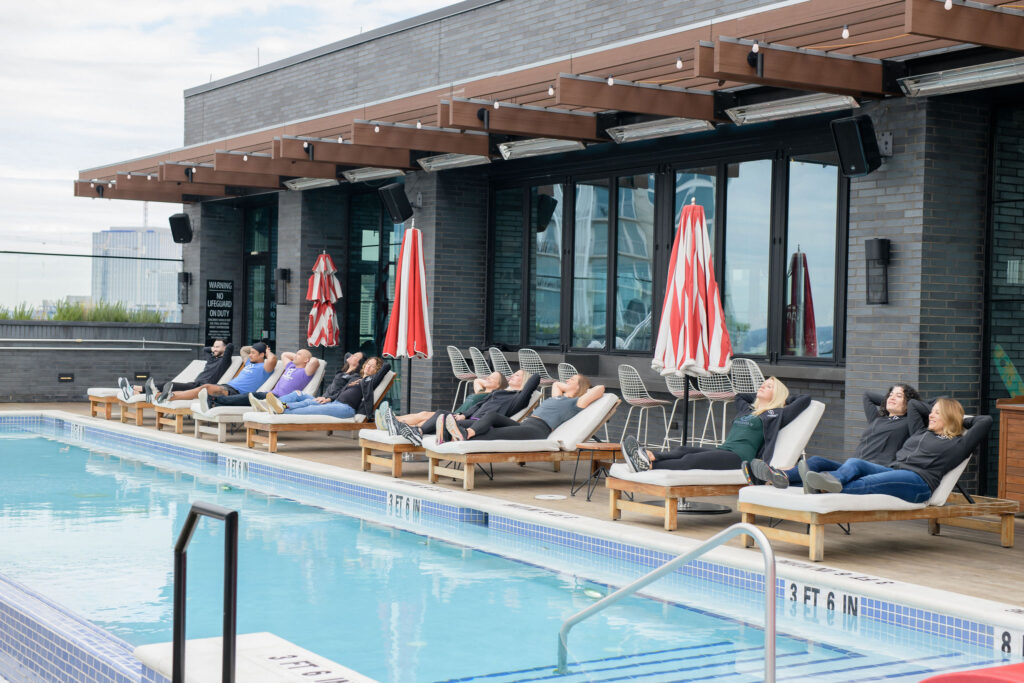One of the most common weight-loss strategies you’ll hear is a simple one: eat less, move more. It suggests that restricting caloric intake and increasing physical activity will help you lose weight, lose fat, and look better. And it will, which is a good thing.
Shoot, it’s a very good thing. Here’s why:
Most people eat too much and aren’t active enough. We’re overeating and sedentary. That’s a devastating one-two punch to your health and fitness, especially in the long run.
The advice—eat less, move more—will help with both aspects of this ticking time bomb.
Eating less can help people take control of their diet. Moving more can help people take control of their physical activity. Combine the two and you’re poised to create a caloric deficit, which is the backbone of any weight loss program. Yay.
Why Eat Less, Move More Is a Good Thing—At First
When it’s all boiled down, weight-based fitness goals all come back to calories in vs calories out. If you want to lose fat, you need more calories out than in. If you want to gain muscle, you need more calories in than out. Simple enough.
The laws of thermodynamics help to explain why calories in and calories out are so important to any nutrition plan. The first law states that energy cannot be created or destroyed. It has to go somewhere.
Calories are the food-based energy used by your body.
The food you eat contains calories and everything you do—lifting, reading this, even sleeping—burns them for fuel. The interplay between calories in (what you eat) and calories out (what you do) is called calorie balance.
A positive balance, or caloric surplus, means you’re consuming more calories than you’re burning. A negative balance, or caloric deficit, means you’re consuming fewer calories than you’re burning. In a surplus, you’ll gain weight. In a deficit, you’ll lose weight.
If the goal is to lose fat, you need more calories out than in. There are a few ways to make that happen.
- You could eat less, decreasing calories in.
- You could move more, increasing calories out.
- You could do a bit of both. Hence the common advice: eat less, move more.
This is very the reason we use tracking as a self-monitoring tool to help you gain an understanding of how much you’re eating. Controlling food intake is the easiest path here, and self-monitoring through tracking is the quickest path to accurately controlling your food intake.
The Bright Side of Eat Less, Move More
Properly followed, eating less and moving more can be great advice. Implementation is simple. And with a little effort, the results soon follow.
You drop weight, get leaner, and become healthier. All big wins.
The caloric deficit led to weight loss, thanks to thermodynamics. Your inevitable fat loss led to a slimmer waist. Awesome. Plus, your risk of chronic disease has decreased significantly. Wins all around.
It took nothing more than the simplest advice: eat less, move more.
But there’s a slight catch. Sure, it’s useful advice. A good thing. Problem is, you can have too much of a good thing. And when you do, it ceases to be good at all.
Too Much of a Good Thing
Bacon. The general consensus is that bacon is a good—if not great—thing. And I tend to agree. In fact, I even threw a bacon party once.
Yes, it was just as delicious as it sounds. We invited a bunch of friends over for a potluck during the championship game of the NCAA Tournament. It was your usual potluck with one important caveat—whatever you brought had to include bacon. But with something as versatile of bacon, there was a lot of room for culinary freedom.
We had everything from sweets and treats like candied bacon to savory deliciousness like stuffed mushrooms wrapped in bacon. Everything tasted great. As the table filled with smokey goodness, my roommate and I knew that this bacon party was a fantastic idea.
And it was. At least at first.
Before we knew it, we had too much of a good thing. And I ate way too much bacon. (Something I hadn’t even considered to be possible.) But of course, I did. There was a seemingly endless spread of bacon-filled goodness and I love food.
By the end of the night, I was confined to my couch. Unwilling, or unable, to move. Incapacitated by a good thing. By bacon. Bacon wasn’t the problem, having too much was.
As with most things, the poison’s in the dose. Even with good things.
The Dark Side of Eat Less, Move More
It’s well established that eat less, move more can be great advice. But too much of a good thing comes with consequences. When I had too much bacon, moving became a terrible idea. I felt sick. Too much of “eat less, move more” can lead to stalled progress, even negative results.
Wait, Ben. How can a strategy that gets results also do the opposite?
Honestly, it is a bit counterintuitive on the surface. But it’s important to remember the mechanism of change within the body: adaptation. Any success you see from training and nutrition (less fat, more muscle, increased strength) is a manifestation of your body adapting to what you’re doing
If you keep doing the same thing, the law of diminishing returns will take effect.
Over time, what might get results at first becomes less and less effective. Before long, those results stop altogether (think: plateaus). And eventually, the same strategies can even start working against you.
That’s when you see the dark side of eat less, move more.
That’s when you’ll hit plateaus. That’s when you’ll experience metabolic adaptation and an inability to lose weight—even on diet protocols that feel like starvation. Pair that intense dieting practice with tons of exercise and it’s akin to burning the candle at both ends: something nobody can do for very long.
At that point, eat less, move more isn’t merely ineffective. It’s bad advice. It can lead someone to go further down the path of eating very little, moving a lot, and feeling burnt out and exhausted every step of the way. Hardly a recipe for long-term success.
How to Know If Eat Less, Move More Is Bad Advice for You
It’s pretty simple, really. Eat less, move more becomes bad advice when it stops working. Has the scale stopped moving? Are you struggling to get all of those workouts in over the course of a week? Are you exhausted, frustrated, or finding cravings and temptations to be worse than ever before?
When that happens, don’t double down on eat less, move more. You’ve followed that protocol to the point that your body has adapted to it. Now it’s time for a slightly different approach. One that allows you to relax for a bit but not lose all of your hard-won progress.
What to Do Instead of Eat Less, Move More
If turning right won’t get you where you want to go, don’t turn right. And if turning right takes you away from your final destination, turn left.
When eat less, move more is a bad idea, it’s time to make that proverbial left turn. It’s time to flip your programming. And it’s time to do the opposite:
Eat more, move less.
Eating More
This isn’t an excuse to run off to the local buffet and eat all of the food. That’s not the best idea.
Considering anyone that’s followed the “eat less, move more” advice to the extreme has likely experienced metabolic adaptation, meaning their metabolism is burning fewer calories than it used to, you need to be strategic. Dive headlong into eating more and you’ll erase a lot of the hard-earned progress you’ve made.
Instead, use strategic tools like diet breaks and maintenance.
A diet break allows you to strategically eat at or around maintenance for a defined period of time so that you can give your body and metabolism a breather from the stress of dieting. Diet breaks are typically best utilized by those who have significant amounts of weight to lose. They’re implemented every 12-16 weeks, and usually last 3-4 weeks at a time.
What if a diet break isn’t enough?
For some people who have been burning the candle at both ends for months or years on end, a 3-4 week diet break might not be enough of a break. Sometimes we need more time to let ourselves bounce back, both psychologically and physiologically. This is where maintenance comes into play.
A dedicated maintenance period could be a much-needed reprieve from intense dieting and exercising. It’s like an extended diet break. You’re still paying attention to your food and you’re still exercising. But instead of those things controlling your life, they just become small tiles that make up the mosaic of your life. Which is what they should be.
Don’t run yourself into the ground.
Fun fact #1: 90–120 minutes in the gym isn’t twice as effective as 45–60. Fun fact #2: 20 minutes is enough to shed serious fat. Fun fact #3: Moving less doesn’t mean you’ll cripple your results.
In fact, most people spend too much time in the gym thinking it’ll shorten the timeline it takes to reach whatever goals they may have. It’s simply unnecessary for their goals. More isn’t always better.
When chasing any sort of goal we have to remember that sustainability is the ultimate goal. Short periods of intense effort can be helpful or necessary, no matter if we’re talking about dieting or exercise. But they can’t last forever. The vast majority of our time and effort should be spent on effort that is sustainable.
This means when exercising, intentionally moving your body in a way that you enjoy is enough. But to be clear: this isn’t a call to stop exercising or moving your body. You should still exercise and move your body regularly and get plenty of steps because NEAT can play a large role in helping you maintain your progress and staying healthy. Exercise should be something that you do for your health and happiness. It shouldn’t leave you feeling run-down all the time. And if it is, chances are it might be time to start cutting back a little bit. Especially if you’ve been chronically under-eating for an extended period of time.
Eat less, move more is good advice. But only for so long. When it stops working for you, it starts working against you. Good news, though, you can fight back and take control of your progress. And in doing so, you can make sure you maintain your progress for the rest of your life.
How? By remembering that these are just small pieces of your life. It’s our job to find a way to fit them into our lives in a way that we can repeat now, next week, next year, and far into the future.

